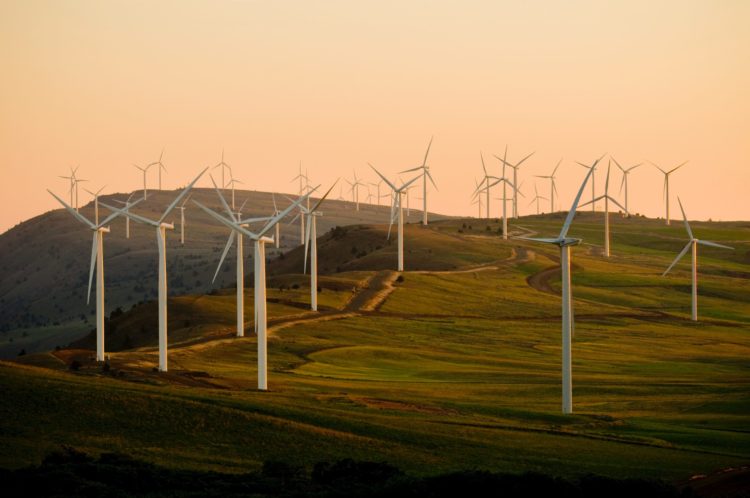Two foundational definitions of news are proximity and immediacy. The closer and more urgent an event or issue, the more likely it is to grab a reader's attention. That can make it challenging to draw readers into stories about things happening far away in distance and time. Add complexity to the equation, and the journalist has a heavy lift. Just ask anyone who writes about climate change and its complex weave of political, economic, environmental and aesthetic impacts. It can be especially hard to help readers understand the urgency of dealing with those issues now.

Hal Bernton of The Seattle Times found a way in an opening paragraph that puts readers in the tractor seat with a wheat farmer in south central Washington, in the middle of a dispute over wind turbines:
KENNEWICK, Benton County — Back in March, Chris Wiley passed a long day in his tractor sowing wheat. He had the controls set to automatic steering and scanned social media. He did not like what he found.
In post after post, people raged about a renewable energy project that would put wind turbines and solar development in the Horse Heaven Hills where he farms. Critics from Pasco, Kennewick and Richland attacked the plan as an outrage that would blemish cherished vistas to the profit of an out-of-state developer looking to export power to Western Washington, Oregon or California.
The project unleashing such passions would be one of the region’s largest renewable energy installations of the past decade with an estimated cost of $1.7 billion.
Wiley is a big supporter. It would generate lease fees that would be a financial boon for his family and dozens of other wheat-growing lease holders in a hardscrabble part of South Central Washington where farmers have long struggled to coax profitable yields from the arid land. So, he decided to compose a kind of farmer’s manifesto, which he drafted on a keyboard inside the cab while the tractor kept on planting seed.
Taken together, those four grafs outline a vast issue that is vexing a certain patch of Washington state, just as it is other open, windy swaths of the U.S. Maybe none are near you, so the relevance doesn't feel acute. But the last line of that first graf — "He did not like what he found." — has to make you wonder: What did he find? In lede-writing, I think of it as a sophisticated version of walking up to someone and saying, "I had a dream about you last night."
But a good lede does not a full story make. Once you get a reader in, you have to hold them. So consider how this one, even if it's not a back-yard issue for you, works to keep you moving forward:
- Essential and wide-ranging sourcing, ensuring he touches on all sides — not just the faux two — of a many-faceted issue. This includes a strange-bedfellow mix of winners and losers. (Bernton never uses the “strange bedfellow” cliché, by the way.)
- Making the complex familiar: When Berton describes the height of wind turbines, he notes that some would rise higher than the Space Needle.
- Necessary context: He gives quick, accessible background on current laws governing windmills, previous projects, future political commitments, and who has the authority to decide.
- Pacing: Bernton pops in short sentences to punctuate a stretch of longer ones, and to emphasize a point or set up aspect of the story.
- Spare selection of quotes: When people speak directly, they do so to add emotion or individual perspective to a part of the issue that Bernton has summarized, and in some cases to help develop character. The result is that those voices stand out more than if the story was quote-heavy.
There’s more, but it is that put-me-in-seat lede and other narrative-type gems sprinkled throughout that keep me reading. (In his book “Writing Tools,” Roy Peter Clark lists Tool No. 32 as “gold coins” — sparkly little things strewed along the path of a story to keep the reader moving forward in the hope they will find more. I link to Clark’s generous share of the basic list here, but do yourself a favor and buy the book. Then read it, with attention, every six months or so.)
Narrative moments in a non-narrative story
I think of them as little narrative moments that pull me back into a story that is, appropriately, explanatory or issues-based. These are the little bits of “show” that helps me stick with the “tell.” Often they surprise, both in placement and detail.

In Bernton’s story, after a sweeping foreshadow nut that hints at the controversy to come (no details yet), he puts me back in the tractor seat with the wheat farmer, who is one of many “who have long struggled to coax profitable yields from the arid land.” The farmer types a social media blast on a keyboard inside his tractor cab as the machine keeps planting on automatic. Bernton refers to it as “a kind of farmer’s manifesto.”
He drops in words and short phrases that describe a wind-blasted landscape sitting over the mighty Columbia River, and the wildlife that lives there. He pulls on those descriptions to help power the core of the story:
- …the economic potential of the winds that blow across the hills. Driven by storms, they funnel along the Columbia River, then are intensified as they reach the ridgelines.
- The “turbine morbidity” rates of the raptors that nest in the region.”
- Wind that “has long been more of an enemy than an ally” to the area’s wheat farmers.
This makes no pretense of being a scene-based narrative. That is not the story’s purpose. But with a few narrative moments woven throughout, Bernton brings me into a distant story and helps me understand the relevance and urgency of an issue even though it isn't playing out in my backyard.
A necessary PS: How the reader reads
All the above stands in terms of stand-out story craft. But it's also important to know that many things are beyond the journalists' control, no matter how hard s/he works at craft.
Two days before the wind turbine story was published, there was a related piece by Bernton, this time focused on planned solar farms — acres and acres of panels stretched across the fields of south central Washington. In this case, he started with a couple that had worked all their lives to finally realize their dream of a retirement home with views that can hardly be priced:
On a clear day from some spots you can see not only Mount Adams dominating the horizon but also Mount Rainier, Mount Hood and Mount St. Helens.
Who could want that dream destroyed, through no fault of their own? Like the wheat farmer above, this couple had every reason to object to the incursion of clean-energy infrastructure in their lives. They were that farmer, only in reverse. The wheat farmer welcomed — needed — the income and future the wind turbines would bring. The retired couple?
GOLDENDALE, Klickitat County — In September 2018, Russ and Amy Hanson received an unsolicited offer from Invenergy to cover their land near this south central Washington town with solar panels.
They could earn up to $40,000 a year for a quarter-century lease on their 40-acre tract, according to correspondence from the company to the Hansons.
After decades in Western Washington, the Hansons were close to retiring to this area with a spectacular view of snow-capped Mount Adams.
They did not want solar panels out their front door, and turned down the deal.
I spoke with Bernton a bit about the two stories, which he planned in tandem. He said he consciously chose ledes for each that would capture the equally sincere but polar opposite views of this complex debate.
"But," he told me, "a lot of readers don't see it see it that way."
Instead, the readers he heard from zeroed in on those ledes — in most cases, according to Bernton, the one about the wheat farmer who welcomes wind turbines — as a sign of the reporter's bias.
I've read both multiple times. I see the same smart, balanced reporting in both. I also see similar gems of narrative story craft sprinkled throughout both. (It would be a fun exercise to go through the first (solar panel) story and identify the same techniques I mention above.) It's the kind of craft that was evident in work that won Bernton the 2020 Society of Environmental Journalists award for beat reporting and numerous other awards, including sharing the 1969 Pulitzer Prize in public service at The Anchorage Daily News.
None of this buffers him from reader criticism, of course. So what's the bigger lesson?
Readers have the right to read what and how they will. We have to accept that. So maybe the goal needs to be to do everything we can to entice them to read, and then be ready to explain how and why we made the decisions we did.



